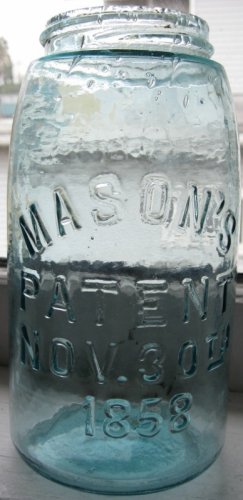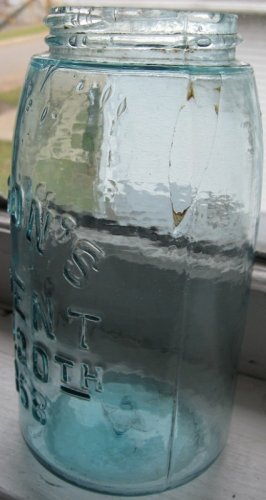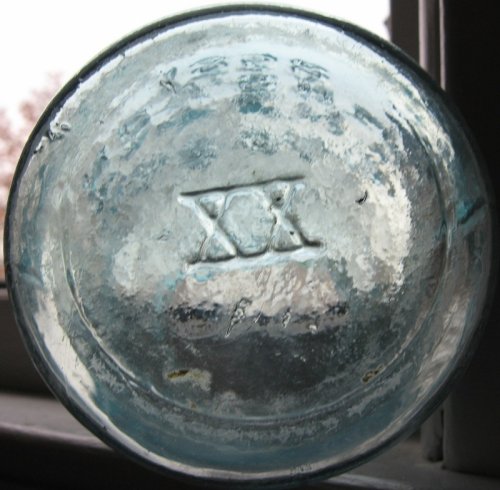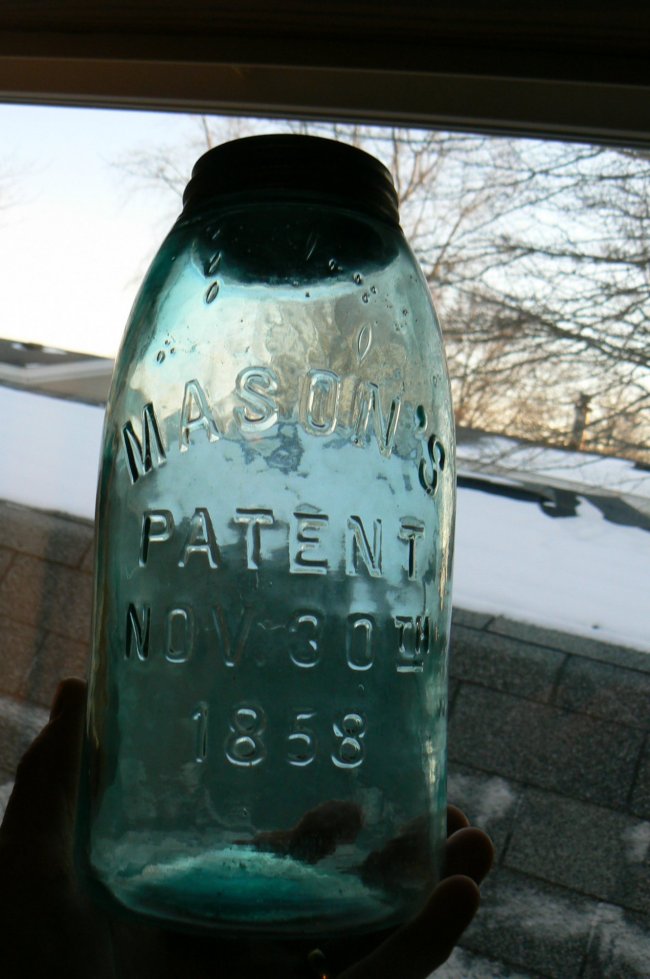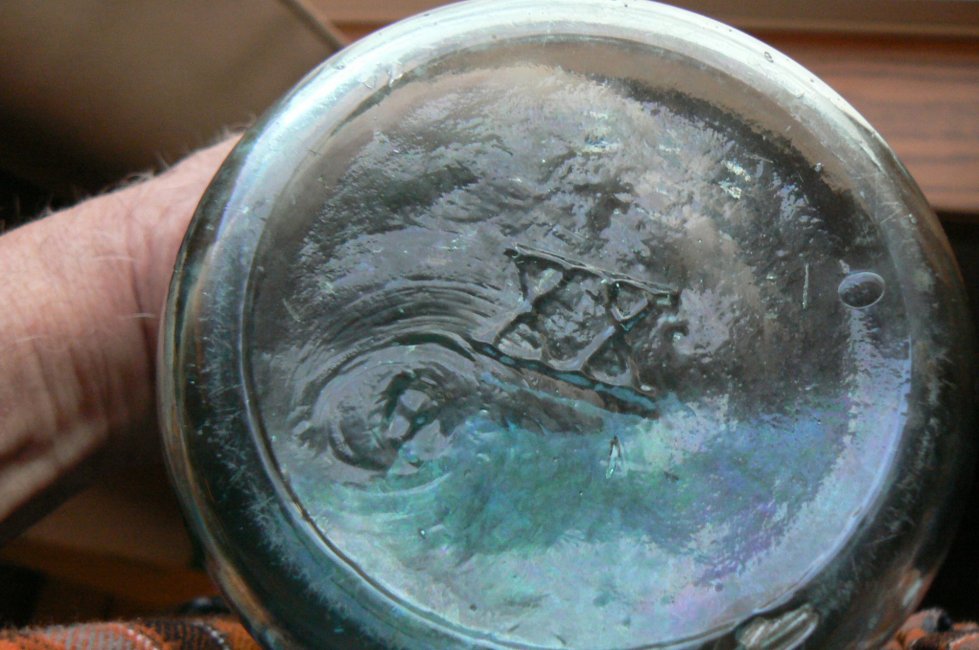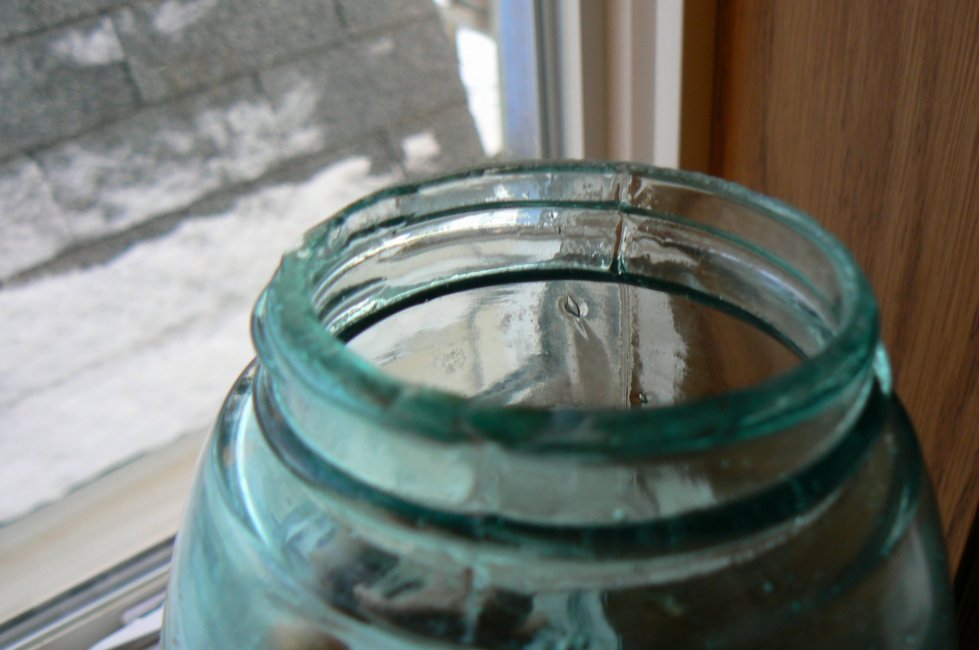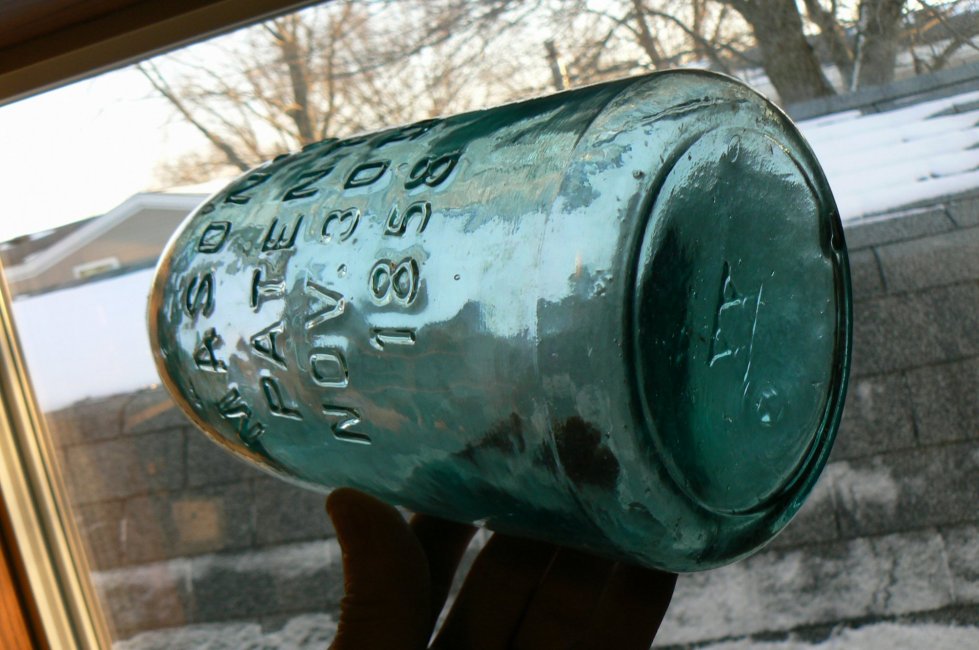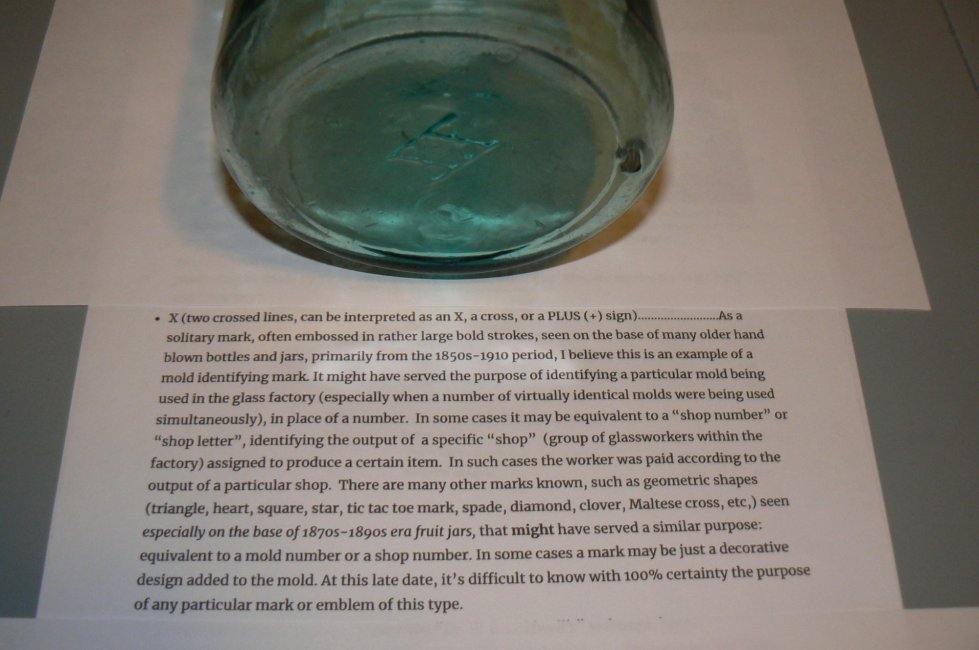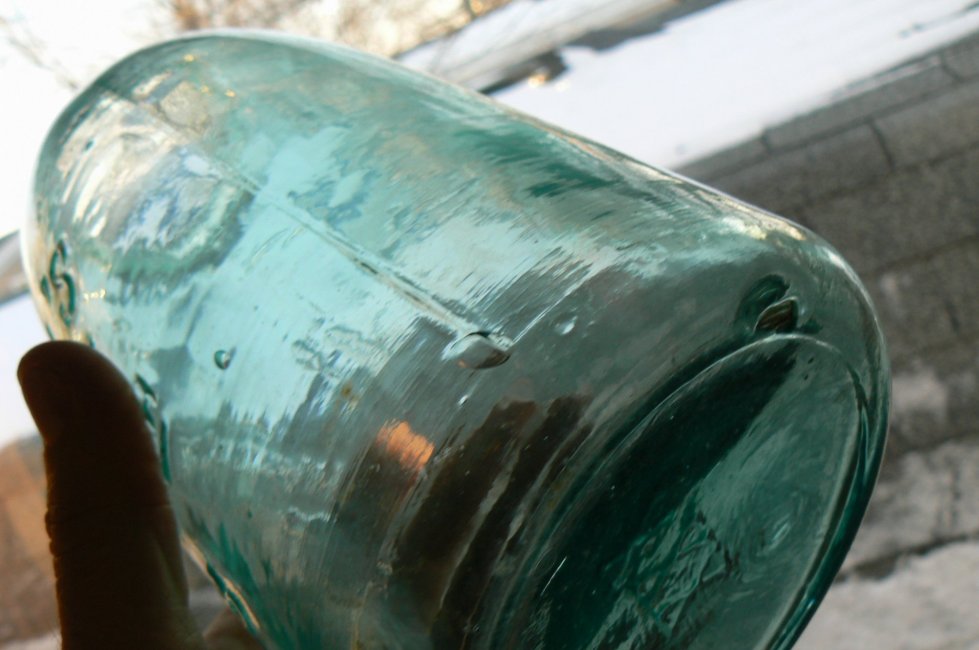georgeoj
Well-Known Member
This jar was brought to me by someone who thought that it looked odd. I had to agree. The marks that I thought to be cold mold whittling may be something quite different. The effect is very difficult to capture with limited photographic skills but it shows up in two of my tries. The marks are small, rectangular, regular in size and are in rings that circle the entire jar, one on top of the next, from top to bottom. My guess is that these are marks made in the manufacture of the mold that were not fully polished out. The crispness of the lettering suggests that this was a new mold.
I would be interested in knowing if anyone else has a jar with this condition and if anyone has a different opinion please say so. George

I would be interested in knowing if anyone else has a jar with this condition and if anyone has a different opinion please say so. George


